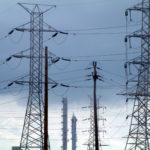 When the Australian Government created a new body to scrutinise infrastructure asset sales for security risk, it occurred to me that we have made infrastructure vulnerable by making it large and interconnected. This is true of both physical and financial infrastructure (e.g. the banking system).
When the Australian Government created a new body to scrutinise infrastructure asset sales for security risk, it occurred to me that we have made infrastructure vulnerable by making it large and interconnected. This is true of both physical and financial infrastructure (e.g. the banking system).
In the past this was a means to greater efficiency and we were prepared to take the risks involved. Today, with technological developments, however, we can decrease the criticality of critical infrastructure by disaggregating, decentralising, and changing the ownership structure. This is particularly so for banking. But take electricity as an example. A series of interconnected, community-owned, local solar grids would be less susceptible to power failures as well as to actors of ‘evil intent’.
The blockage is the change in ownership structure. Not unnaturally, incumbents stand to lose. Large companies and governments in electricity supply are vulnerable to both criticality and financial risks. They have been putting a lot of thought into the changes that can be made so that we should not assume that they will resist change – although it is probably in their interest to slow it down. We all fight to preserve our own, it’s only natural.
So, if we want to see change in the community interest, it is in that interest to find ways to help current owners make the transition – profitably and with minimal delay.
What is being done, or could be done? What could we support? Ideas?

Interesting perspective. Many suburbs could link solar panels to batteries and create stand alone electricity generating facilities.
The problem is governance and is cost. Perhaps an Auditor-General could look at the costs of governance pre and post privatisation to set a standard.
Yes. And some electricity companies are even now looking at how they can transition from supplying electricity to managing the new systems. One of the new models is to have the electricity company supply a management service for the localised grids, using the company’s existing poles and wires. Governance then may not be such a difficult issue.
It would be good if such research as you suggest would fit within the ambit of Auditors-General, or even perhaps within the research capabilities of regulators. The point is that criticality can be viewed as a management issue – and tackled with management tools such as you suggest. Or it can be seen as a security issue.
Security issues, however, have to be careful that urgency of solution does not exclude examination of effectiveness of solution.
And we need to recognise that whether a security or a management issue – criticality changes over time.